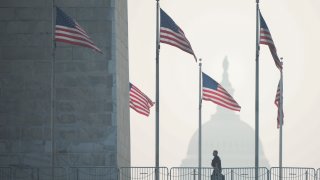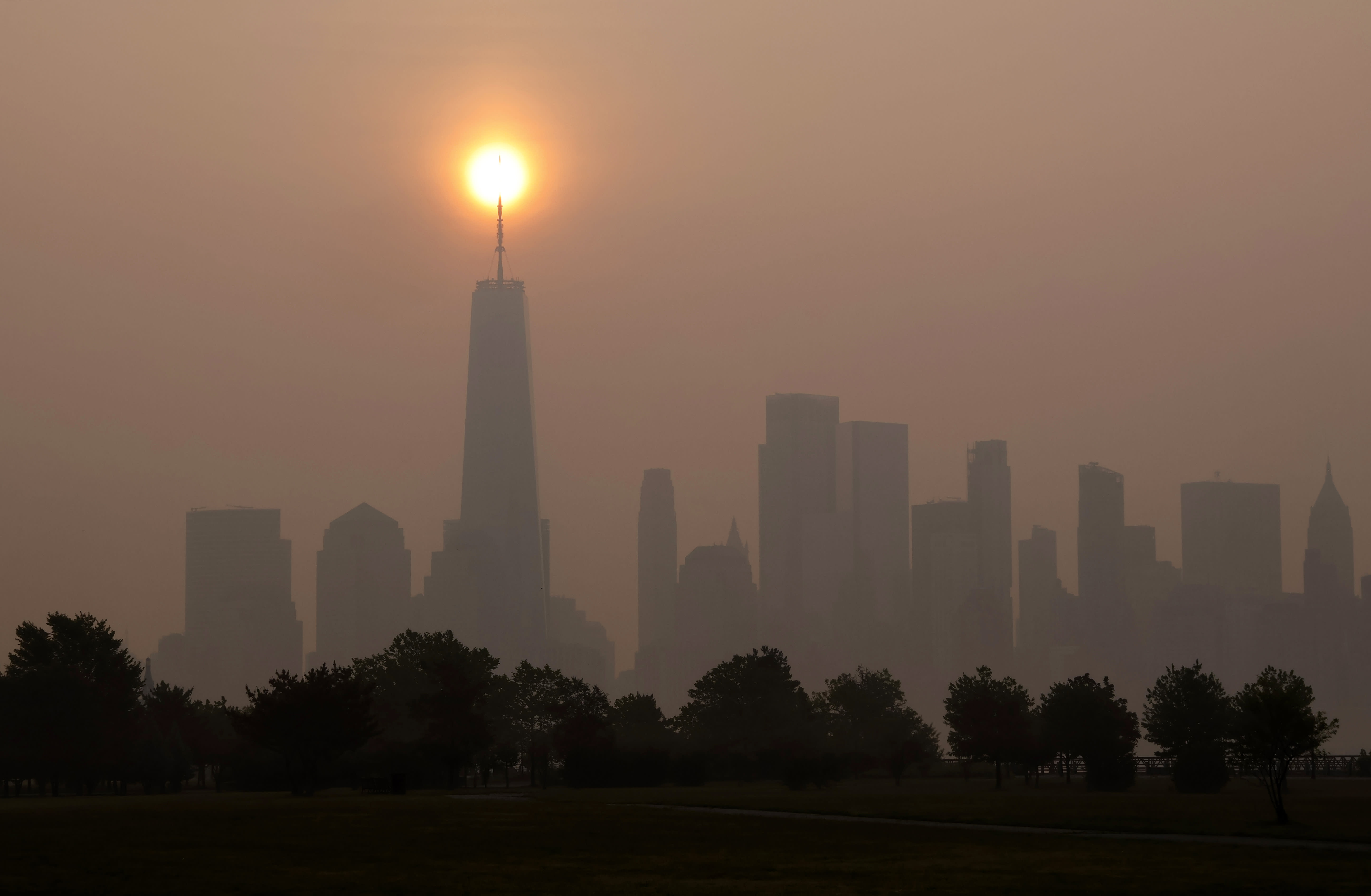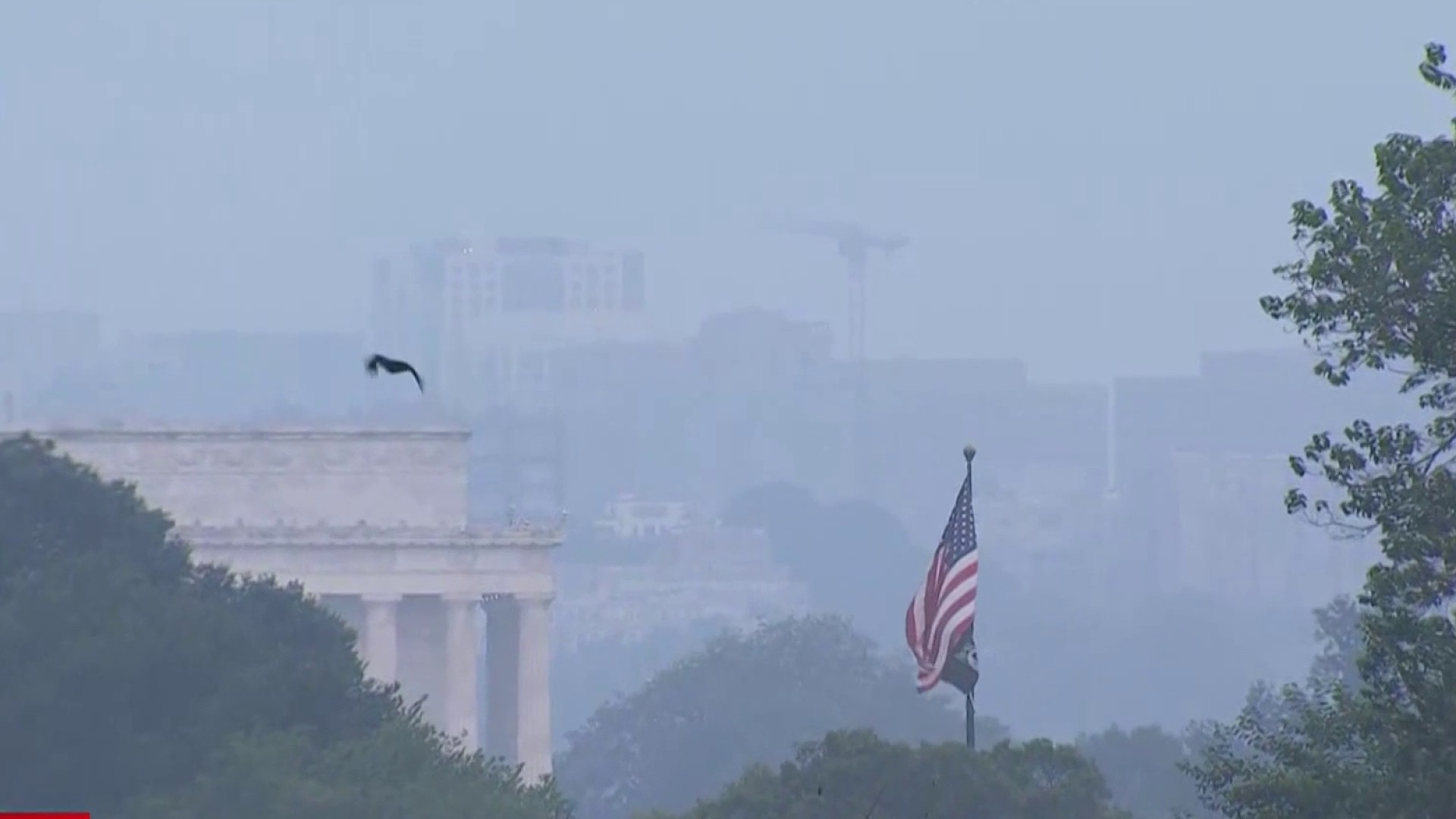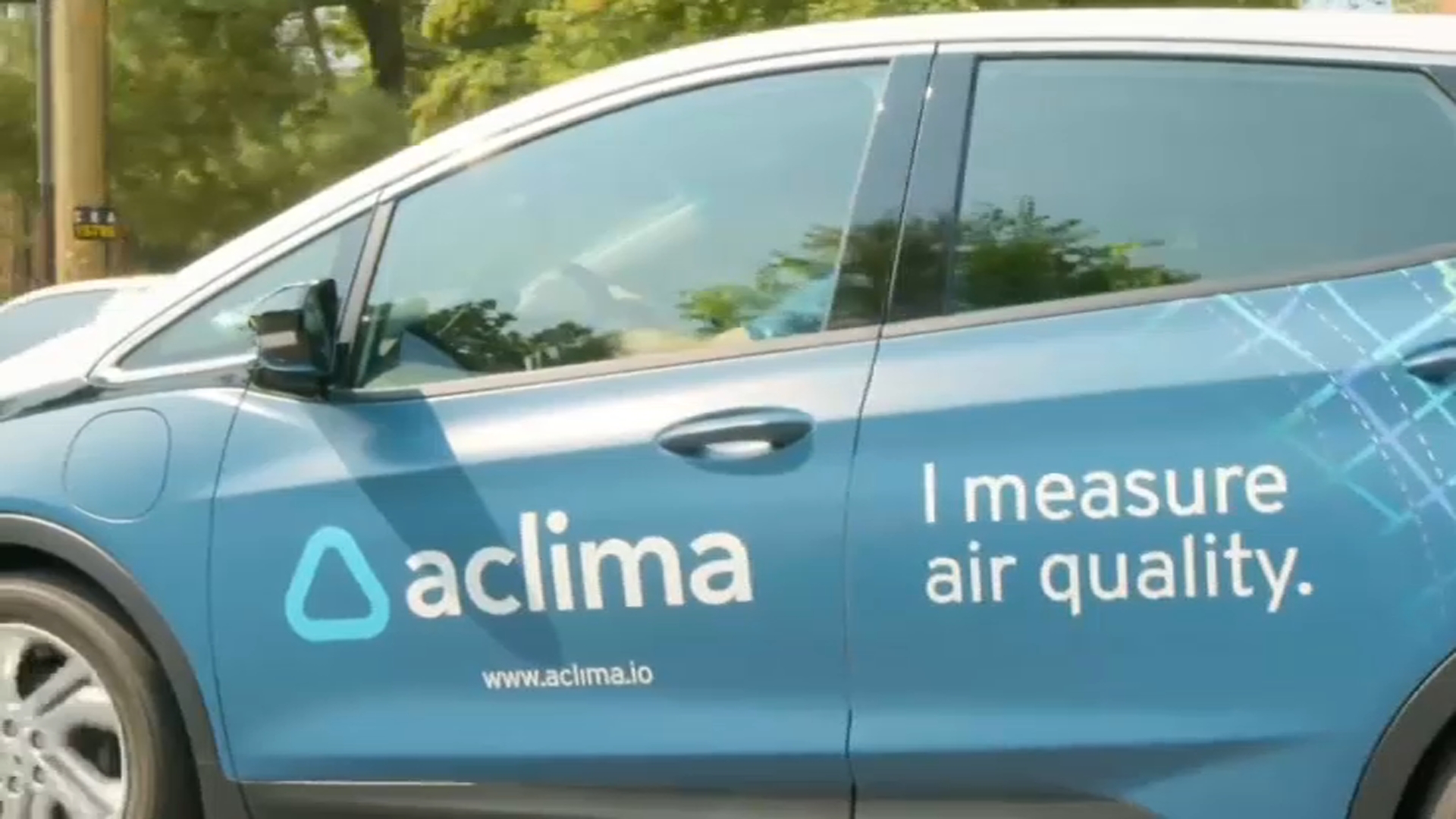
What to Know
- Canada is experiencing its worst-ever wildfire season, with hundreds of fires expected to continue through the summer.
- The jet stream that blows across the U.S. has already carried smoke from those fires south into the Northeast, and at times, the D.C. region — worsening our air quality.
- You can check the air quality in your area using the interactive map below.
The D.C. area is in for a smoky summer.
June brought us at least two stretches of notably terrible air, one of which gave D.C. the worst air quality in the world.
And unfortunately for our lungs, we're likely to see more air quality alerts before the summer is out — especially with high temperatures and dry conditions.
What's the air quality where I live today?
You can check the air quality in your part of the D.C. area using the interactive map below.
The data in the map refreshes itself daily.
For hourly updates based on zip code or city, you can also go to AirNow.gov.
What do the different air quality codes mean?
The Environmental Protection Agency monitors how polluted or clear the air is with the Air Quality Index, or AQI. The scale runs from 0 to 500, and the higher the AQI, the more pollution there is in the air.
Each range on the AQI is given a color. Green is the zero to 50 part of the range, and qualifies as "Good" air quality; yellow is 51 to 100, and qualifies as "Moderate" air.
Code orange ranges from 101 to 150, and means the air is unhealthy for sensitive groups, like children and elderly adults, or people with asthma and other chronic respiratory conditions.
A code red, which ranges from 151 to 200, is unhealthy for everyone.
Code purple means everyone is at greater risk of health impacts. Once you get to maroon, which is 301 and higher, the effects on everyone's health reach emergency levels, and people are more likely to be sickened.
See the chart below for the full range of the AQI.

How could bad air quality affect my health?
Wildfires release a lot of pollution into the atmosphere. The fine particulate matter in the smoke is especially bad for human lungs, and can cause decreased lung function, throat irritation and shortness of breath, according to the EPA. It can also cause bronchitis and asthma, according to CNBC.
According to research from Stanford University, being "exposed to wildfire smoke causing AQI of 150 for several days is equivalent to about seven cigarettes a day if someone were outside the whole time."
How can I stay safe during air quality alerts?
The best way to protect yourself from the negative health effects of wildfire smoke is to avoid breathing it in -- which means staying inside as much as possible.
On air quality alert days, for example, it's a good idea to hit the gym instead if you typically work out outside. Air quality alert days are also not the best times to bring your kids to the park or the pool, especially if they have allergies, asthma, or chronic health issues.
Pets should also stay inside when the air is unhealthy.
“Other mammals, they suffer from many of the same lung conditions that humans do,” Dr. Purvi Parikh, an allergist and immunologist at the Allergy & Asthma Network, told NBC News.
If the air quality reaches code red or code purple levels, it's a good idea to use the "recirculate" air button in your car, Storm Team4 Meteorologist Chuck Bell said.
"This keeps the outside air OUT and keeps sending the inside air through the filters," he said.
If you need extra protection from smoky conditions, the Centers for Disease Control recommends finding a room you can seal off from outside air. Consider a portable air cleaner or a filter to keep that room clean.
There are ways to create an air filter yourself using a box fan and furnace filters you can purchase at most grocery stores.
Respirators, like N95s, can help reduce your smoke exposure if you have to be outside in poor air quality conditions, according to the CDC.
How are Canadian wildfires affecting DC's air quality?
Canada is experiencing its worst-ever wildfire season this year.
According to the Canadian government, a record 30,000 square miles — land about the size of South Carolina — has been scorched.
As of July 2, nearly every province in Canada has fires burning. There are 490 fires burning nationally, with 255 of them considered to be out of control.
Smoke from those wildfires has brought hazy, smoky air into large parts of Canada and the northeastern United States. In the U.S., the poor air has moved at least as far west as Illinois, Indiana and even Minnesota, and as far south as Virginia.
Why does smoke from Canada keep moving into DC?
We all live on the same planet, and look up at the same sky. While this is usually a beautiful, positive thing, it also means that smoke from environmental hazards in one part of the globe travels into other areas with ease.
That's especially true considering the path of the jet stream across North America.
Jet streams are narrow bands of wind that form where hot and cold air meet in the upper levels of the atmosphere, according to the National Oceanic and Atmospheric Administration (NOAA). They blow from west to east, but can move as airflow shifts north or south.
The shape of the jet stream curves is affected by "the locations of high and low pressure systems, warm and cold air, and seasonal changes," NOAA says on its website, and the stream shape changes often.
But, at this time of year, the jet stream generally stays around the U.S.-Canadian border. If those curves dip further south over the East Coast, then smoke in Canada gets blown down toward D.C.
News4 sends breaking news stories by email. Go here to sign up to get breaking news alerts in your inbox.




